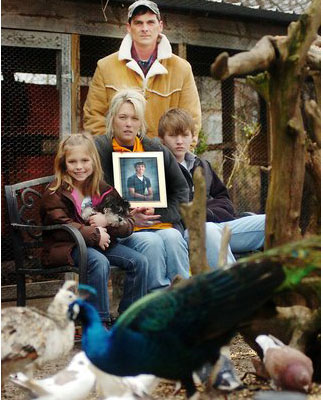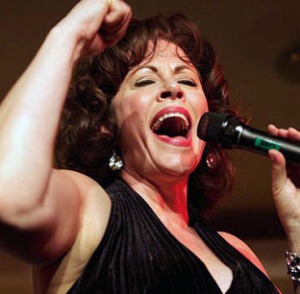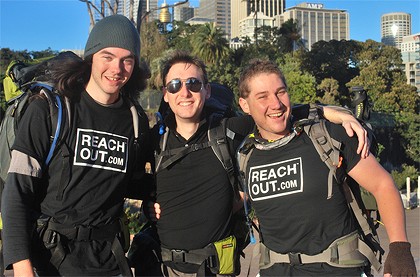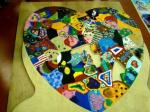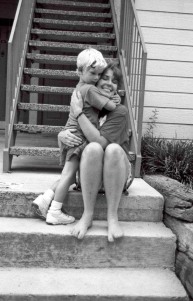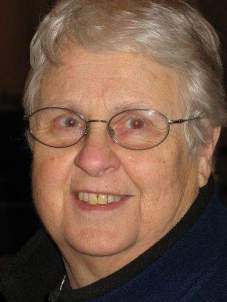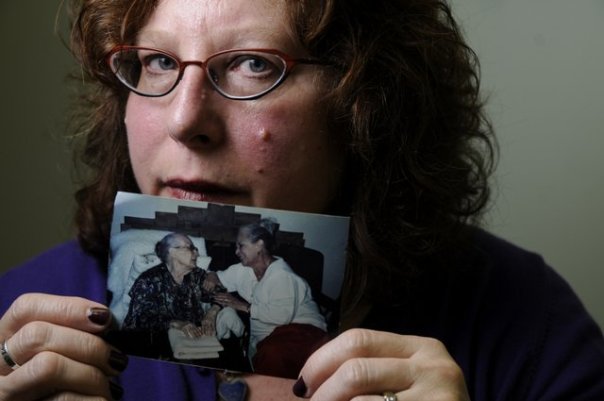
Marcia Epstein lost her mother, Abba Howell (pictured on the right in the snapshot Marcia is holding), to suicide in 2003. (Thad Allender, Lawrence Journal-World)
[Editor’s note: “Links to Suicide Grief Stories …” is a SPNAC series featuring stories of survivors of suicide loss — about the effect their loved one’s suicide has had on them and how they are coping with their grief. FJC]
In “Crisis Counselor Shares Survivors’ Grief,“ reporter Chad Lawhorn writes about Marcia Epstein, whose mother died by suicide in 2003. Epstein has been the director of the Headquarters Counseling Center in Lawrence, Kansas, since 1979.
“When I think about suicide, what I think about is the sadness that this person thought there was no other choice … Every day we get the kinds of calls that are so intense that we know the person on the other end of the line could die this day,” Epstein said.
“The call may start off where the person is 95 percent sure that they’re going to kill themselves. But you have to remember that there’s a little bit of hope there because they called. Our job is to ratchet up that hope.”
And to talk. Epstein’s perpetual message is that there’s always help available, always someone ready to listen. (Lawrence Journal-World)
The article is accompanied by a companion story, Call of Duty.
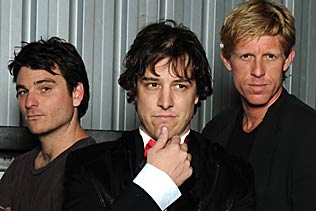
From left, Justin Rosniak, Samuel Johson, and Simon Lyndon star in Brendan Cowell's hit play "Men." (Melbourne Herald Sun)
In “No Longer a Man in a Hurry,” Senior Arts Writer Robin Usher reviews the play Men, which stars Samuel Johnson, whose girlfriend died by suicide in 2006.
“I was born to play this role,” [said Johnson.] “It’s a very personal thing for me, but I’m finding it cathartic to channel my own situation into something else.”
[After his girlfriend died,] Johnson stopped working as an actor to avoid the media spotlight and sought counselling over his drug and alcohol abuse. “I came out of it with a bunch of ways to combat my addictive nature. I didn’t realise the extent of my problems until everything fell to pieces. I was an addict before Lainie [Woodlands] died but that gave me an excuse to go harder.” (The Age [Australia])
In ““J. Kyle Braid Ranch Teaches Leadership Skills to Teenagers,“ reporter Kevin Hoffman writes about Ken and Colleen Braid, whose son Kyle died by suicide in 1994 when he was 17 years old. The Braids founded the ranch “to perfect leadership skills found in responsible, dedicated teenagers.”
Teens between their sophomore and junior years of high school come from throughout the United States to the leadership camp after selection by teachers and peers. The Braids acknowledge peer groups have the greatest influence on teens and can make a positive impact by creating responsible leaders.
“It taught me how to really work with people and it changes your life,” [said one former student]. (The Mountain Mail [Salida, Colo.])
In “Riding for Life,” reporter Brad Meyer writes about David Alexander, whose daughter died by suicide
in 2008 when she was 17 years old. The Michigan man is bicycling across the country “‘to talk to people about Angela, her life and her suicide. It [is] an opportunity to tell people how important it is to communicate with people in their lives.’”
In May 2009, Alexander set off on a road bike with a small trailer holding minimal supplies to tell his story to local newspapers, TV stations, and individuals wherever he goes. He carries with him several volumes of newspaper clippings and journals he has kept throughout his trip. He asks every person he encounters to write a brief comment in his journals as a means of including them in his effort. (The Courier [Houston, Texas])
In “Smiling While Singing the ‘Blues,'”” features reporter Kerstin Gupilan writes about Stacy
Merlos, who joined the CSUN Blues Project after a close friend and fellow student, Dylan Miles, died by suicide. The project “spread[s] awareness about depression and suicide as well as inform[s] students of the counseling services CSUN offers.”
“[Blues] helped me to deal with what I was feeling. I closed myself off,” she said. “[My friend who died by suicide]He [Miles] is such a big part of my presentation, the video really hits home.”
Before his death, Merlos remembers seeing signs of depression in Miles and even joking with him about his psychological state of mind. During that time Merlos had no real direction in how to handle Miles’ depression. Now, aspiring to become a marriage and family counselor, Merlos hopes to one day help those experiencing depression and suicidal thoughts. (Daily Sundial [California State University Northridge])
In “My Best Friend Ended Her Life at 37,” Lea Lane writes about her loss, focusing on her understanding of depression as an illness.
About a year before she died, Delia became gaunt, her eyes haunted. She was seeing a psychiatrist, and on meds, but appeared lost and frightened. She told me she felt like she was in “a dark hole.” She said there was nothing I could do. She doubted everything she did.
[After she killed herself,] I called her friends, who didn’t believe me. “She had everything,” they said. “Why would she take her life?”
They were trying to find a reason. But depression can be a terminal disease. There is no “reason,” any more than getting a heart attack or cancer has a reason. (Huffington Post)
[The abridged URL for this post is bit.ly/grief030810 .]
|


